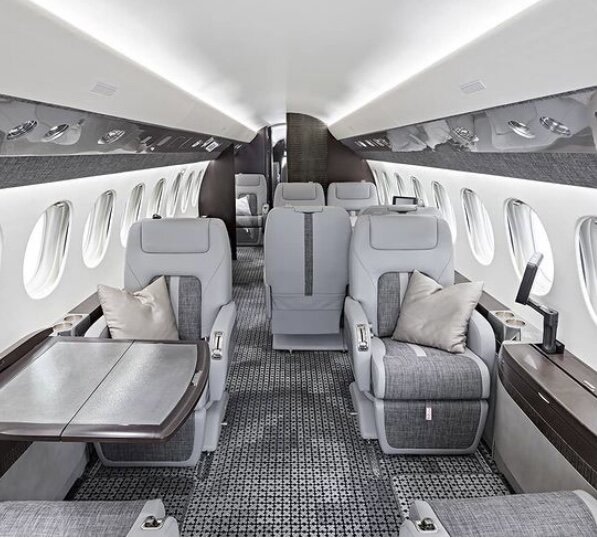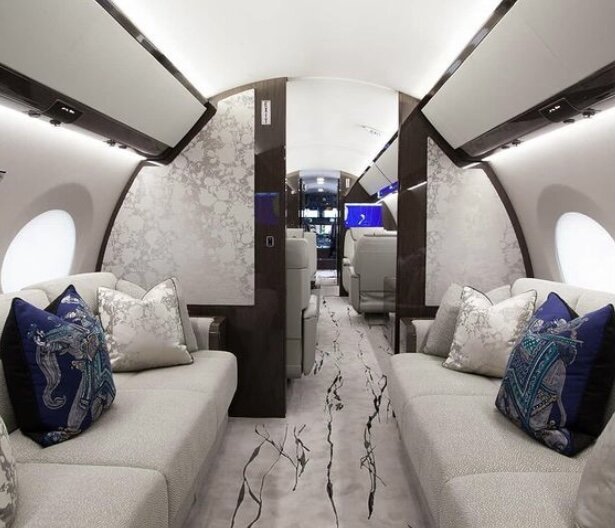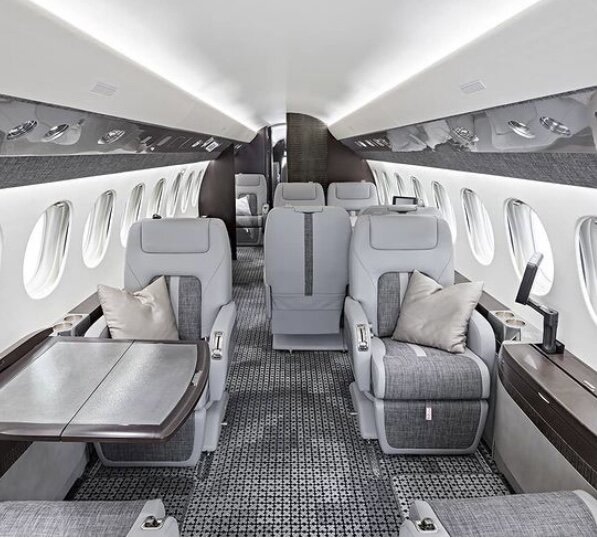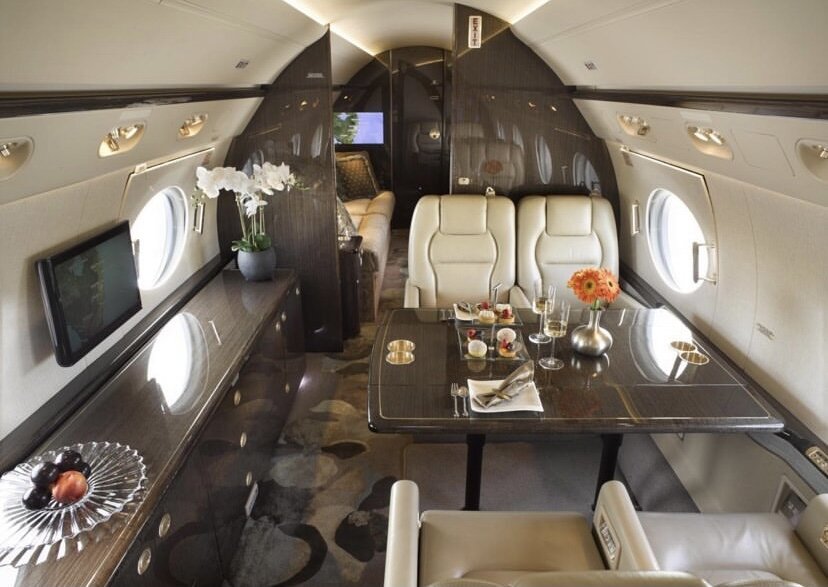
Common Aviation Carpet Mistakes you Might be Making—Interview with Susie Parker of Tai Ping
Your aircraft’s carpet is the keystone to the whole cabin’s design. In aviation, the carpet has a lot of visual impact, so you must take proper care of such an important piece of your cabin.
Unfortunately, owners are unknowingly damaging their cabin carpet. I’m so pleased to share with you the expertise and knowledge of Susie Parker with Tai Ping, who took the time to share all the ways to properly take care of your aircraft’s carpet. Tai Ping is known for its beautifully designed and hand-crafted carpets. Their designs are in jets, yachts, luxury shops, and distinguished residences all over the globe.
Image provided by Tai Ping
For those who aren’t familiar, tell us a little bit about yourself and Tai Ping Carpets.
Tai Ping carpets is a remarkable company with a storied history. The company was created in 1956 when Sir Lawrence Kadoorie created a place for the talented artisans to preserve their skill of making carpets by hand. With this focus on craftsmanship and design, the brand was immediately propelled into the attention of elite global designers. High-profile projects, including Buckingham Palace, have used the venerated company for years. In 2005, Tai Ping purchased the iconic American brand, Edward Fields CarpetMakers. Edward Fields had also established an elite clientele, Brooke Astor and Jackie Kennedy to name a few. Additionally, Edward Fields’ ventured into the world of aviation as far back as the 1970’s. So when Tai Ping bought Edward Fields, it was a natural progression to offer the aviation industry the new and exciting designs and capabilities of Tai Ping.
I joined Tai Ping 14 years ago, just after the Edward Field’s purchase. Initially, my focus was high-end residential and corporate and I am proud of some very custom projects. But I recognized immediately that the inspiring and fashion-forward designs of Tai Ping were being met with delight by the aviation world. You can say it took off from there and I’ve been focusing solely on the private jet business for almost 10 years now.
We’ve all seen how sad and ill-fitting cabin carpets can get when they aren’t cared for or cleaned correctly. What sort of preventative, routine maintenance should aircraft owners be doing for their carpets?
Our customers are global so we have to consider the various locales of our customers whether it the winter storms in Russia or the humidity of Southeast Asia. Fortunately, we work with wise and experienced designers who understand that the right specification is the best way to ensure a well-maintained carpet. Also, carpets in aircraft are unique in that there is very heavy traffic flow in just a few spaces – the entry and the center aisle. We always recommend foot mats to help catch any soil or debris immediately upon entry and help protect from the elements. Lastly, I would say never underestimate the value of frequent vacuuming. Lifting dirt and soil out of the carpet helps keep debris from breaking down and settling into the fibers. Vacuuming in a slow and methodical way, in all directions is best and really helps prolong the life of the carpet.
Image provided by Tai Ping
What’s the most common carpet mistake you see in the aviation world?
It’s unfortunate that most damage to a carpet is not caused by an accident but instead an uneducated attempt to clean up from an accident. There are carpet cleaners easily available at retail stores, but most are geared towards machine-made carpets made of synthetic fibers. Our products are made by hand and consist of either wool and/or silk. Just a few sprays of the wrong chemical agent can damage the silk or wool. Never apply a liquid cleaning agent directly to the carpet – this is like adding a new spill that again has to be removed, or worse, can have a bleaching effect. Simply blot the spot and avoid over-wetting a silk carpet as the fibers don’t recover well from oversoaking or over rubbing.
I don’t think most understand the importance of using a vacuum that’s certified by the Carpet & Rug Institute’s Seal of Approval program. What is the main difference between certified and non-certified vacuums?
I can’t speak to CRI’s exact certification process, and they have multiple tiers of hundreds of vacuums geared towards many different uses. But we do recommend a few criteria when purchasing a vacuum for a Tai Ping carpet:
1) Avoid using vacuum heads with hard bristles that pull on the fibres – use heads with only soft bristles.
2) Be sure there is no beater bar or make sure the beater is raised so as to not damage the carpet surface.
3) Be sure there are no cracks or damage to the head of the vacuum that can snag and pull out yarn.
While a hand-tufted carpet is strong and durable, we don’t want to unnecessarily pull up the loops or pile. You may get a sprout which is normal and can just be clipped. It is not like a knitted sweater that will unravel. But the goal is to lift the fibers and remove dirt as frequently as possible.
Plastic mats with spikes on the bottom are a big “no-no” for your carpet. Can you please explain why and what other ways customers might be unknowingly voiding their carpet’s warranty?
I have personally not seen plastic spikes on carpet, but guidance against it would be to avoid pulling. I remember there was a time when a thin plastic sheet was placed on carpet to protect it while in service. This plastic had an adhesive to hold it in place, but it left a sticky residue and pulled up fibers. I have not seen that for years, but it stands out as a practice to avoid.
More common nowadays are the misguided approaches toward cleaning. Find a good cleaner who is IICRC certified and experienced with natural wool and/or silk fibers. Do not rely on just any crew at any FBO. If there is a small spot that needs cleaning, advise to the professional what occurred, and they can assess the type of carpet (wool and/or silk, light or dark color, loop or cut) and the type of soiling (oil-based or water-based). Just like with clothing, spots require different approaches, and a good and certified cleaner can make that assessment in real-time and use the appropriate cleaning agent.
Image provided by Tai Ping
Is there a topical treatment you recommend for customers looking for extra stain protection?
We do not subscribe to a particular topical treatment, nor do we recommend anything is added to our carpets. There are so many products out there that if the customer does want to put something on the surface, it would be of their own volition. We can supply a sample for testing but be sure that once a product is applied, that damage to the carpet does not occur. Wool is inherently soil-resistant and can wear well for years (think antique rugs!) with the regular vacuuming and careful cleaning.
If clients have a spare carpet for their aircraft, do you recommend rotating them at set intervals or saving it in case something happens to the installed carpet?
That will depend on the customer’s use and preference, but I think as long as the storage conditions are appropriate, then I would recommend saving it.
How often do you recommend replacing your carpet if it’s cared for properly?
Again, it would definitely depend on the situation. Some aircraft are used for light personal use while others for heavy charter use. I would assess based on how heavily the carpet is trafficked and how worn looking it is. Some of our products have been performing for 10 years while others turn over every 2 years.
Image provided by Tai Ping
Accidents happen, and time is of the essence when spot treating! Do you have a resource for customers on the best way to spot-treat their carpet? Is it different for wool vs. silk?
Just like finding a good dry cleaner for your clothing, having a reliable carpet cleaner in your contacts is essential. If an accident happens, blot it with a clean cloth and contact the professional. Do not try anything on your own. We have a network of trusted cleaners in the US and Europe, and Asia. Some of our cleaning partners will come out to you to clean, while others are located regionally.
Which carpet design would you put on your jet?
Well first, I would love to have a jet! Maybe one day, but if I could design the interior, I would have to acknowledge the fact that the breakthrough technology on jets today really demands a carpet that can perform but also rises to the elegant interior’s aesthetic. That said, I would select one of our sophisticated wool and silk ombre fades in medium neutral colors. Tai Ping’s artisans are so talented that they can execute this difficult design beautifully with the end result as an understated foundation within the space.
To learn more about Tai Ping, visit https://www.taipingaviation.com or contact Susie Parker at susieparker@taipingcarpets.com.
WELCOME to the blog
As an aviation interior designer, I have devoted my entire professional career to helping customers navigate practical selections that address their individual needs and create beautiful, inspiring designs they love.
Check out the blog for insights, trends and tips for taking care of your aircraft.



